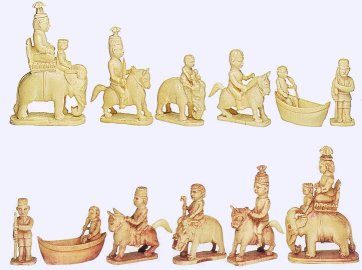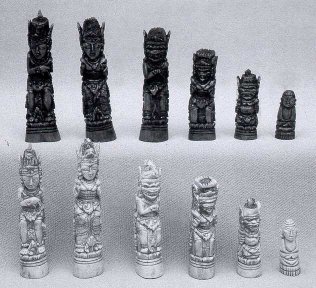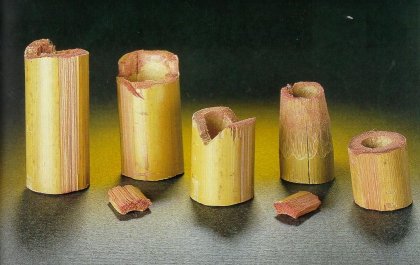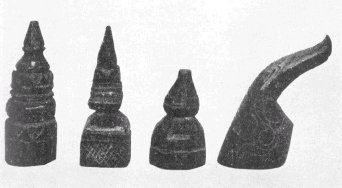Main Chator, Malay Chess
Main Chator is Malay Chess, Chess played in Malaysia.
SHORT DESCRIPTION:
The rules of the game are very similar to modern Chess, except the Pawn promotion which is a rather complicated process. This type of Chess has been reported in regions forming the modern Malaysia and Indonesia (Sumatra, Java, Borneo). A similar set coming from neighboring Philippines is also displayed below.
The names of the pieces and their
meanings are the following
(source: H.J.R.Murray,
"A history of Chess", Oxford, 1913.):
|
Malay |
Javan |
meaning |
equivalent |
|
Raja |
Ratu |
King |
King |
|
Mantri |
Pateh |
Minister |
Queen |
|
Gajah |
Mantri |
Elephant, Minister |
Bishop |
|
Kuda |
Jaran |
Horse |
Knight |
|
Ter, Chemor |
Prahn |
Chariot |
Rook |
|
Bidaq |
Bidaq |
Foot soldier |
Pawn |
DISCUSSION
Located on the maritime roads linking China and Japan to India and Persia, the Malay islands and peninsula have been influenced by a deep and strong Indian influence since the 7th c. C.E. and before the arrival of Islam. Those people adopted Buddhism and Hinduism and rules mighty empires like the Çailendra at Java from 7th to 12th c. which built Borobudur temple, Çrivijaya at Sumatra from 8th to 13th c., and Majapahit in the 14th c.
They probably took Chess as well from Indians. Chess is attested there since the first European (Portuguese) contacts at the beginning of the 16th c. and seemed already well known when it happened. However, the game was later on deeply influenced by the European play. For instance, the modern moves for the Queen and the Bishop were adopted.
Main means "game" and Chator is obviously "chess", as a broken form of Sanskrit Chaturanga. The Malay name of the pieces also come from Sanskrit (Raja, Mantri, Gajah) or from Tamil and Telegu, Dravidian languages from South East India (Kuda, Ter, Chemor). The only exception is Bidaq which obviously is inherited from Muslim contacts (Baidaq in Arabic).
Two kinds of sets exists. One very basic, carved in ten minutes from bamboo or other plants with abstract shapes, the other is finely carved. Interestingly, the Rook is represented by a Boat there, like in certain parts of India and in Burma. It probably denotes the Hindu influence, a common character with Thailand and Cambodia where Boat is name of the piece.

Classic Javanese set, end of 19th c.

Ivory set from Bali with Indian characters

Bamboo set from Java


Selangor (Malaysia) set depiected by Murray

Filipino set circa 1850. Very similar to
Murray's Selangor set








